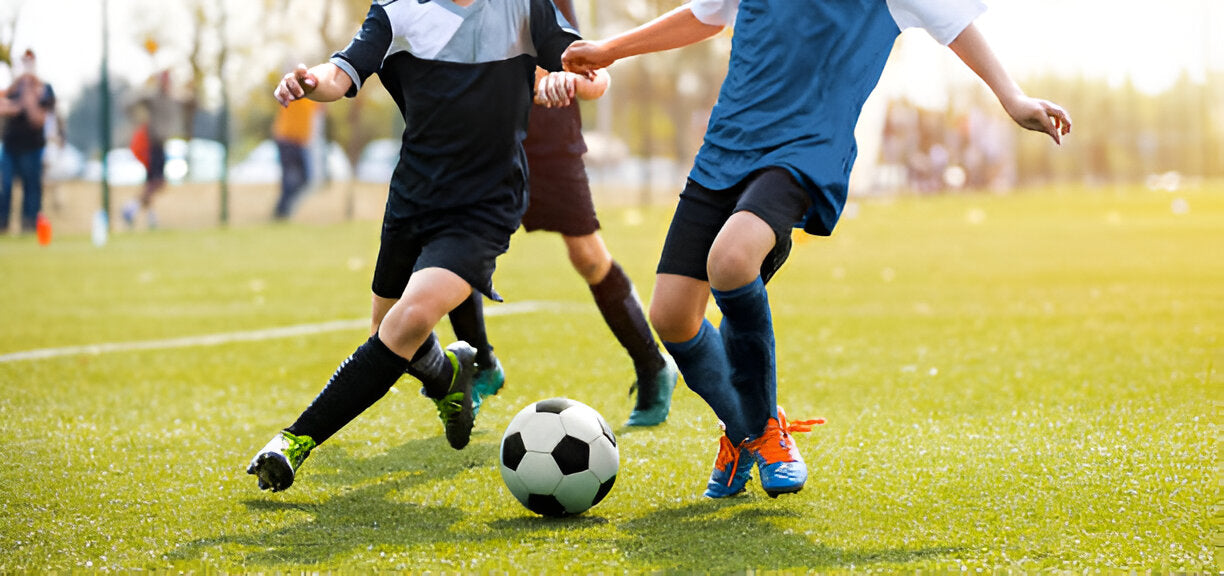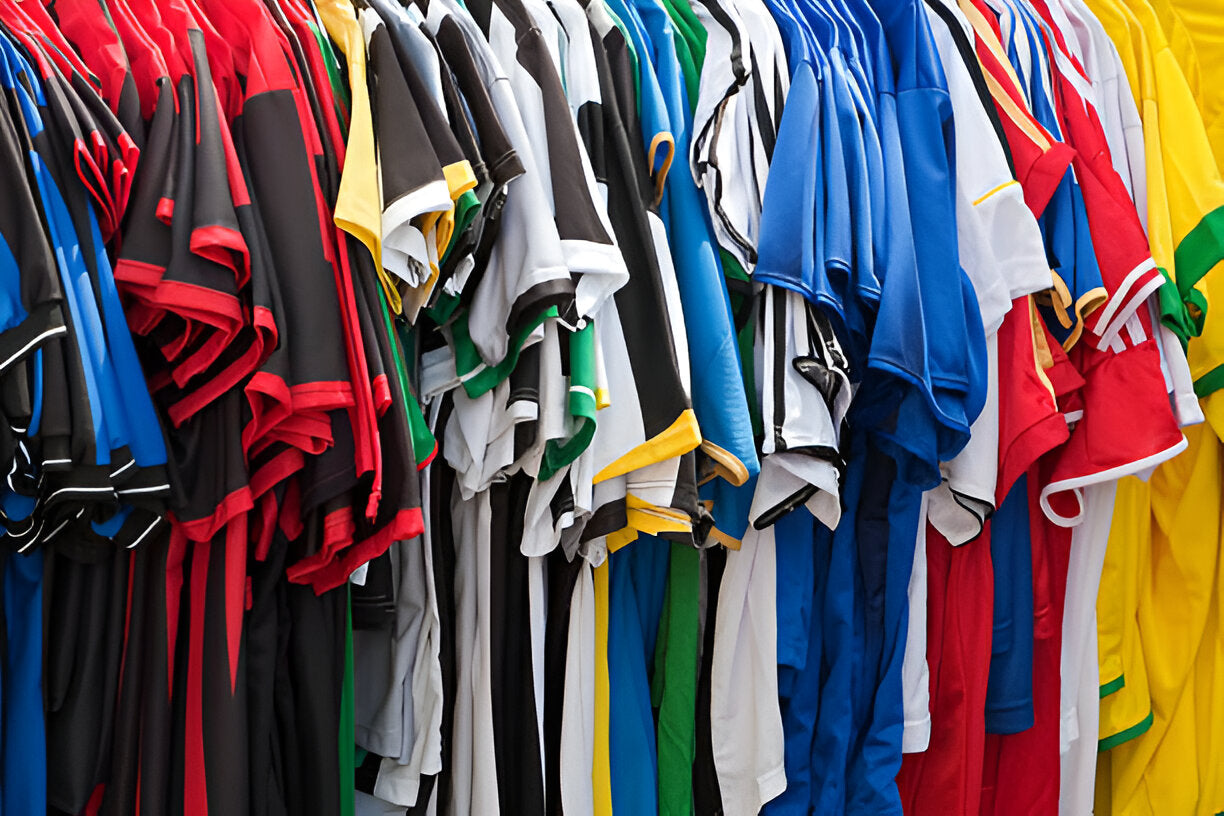When it comes to field sports, footwear can make or break a player's performance. Both soccer and football demand specific types of cleats, but these shoes are far from interchangeable. Though they may seem similar at a glance, soccer and football cleats are uniquely designed to meet the distinct demands of each sport. From the design, weight, and sole type to their purpose on the field, these cleats have notable differences that can affect a player's ability to perform optimally.
This blog explores the differences between soccer and football cleats and why choosing the correct pair is crucial.
Purpose: Functionality Meets Field Dynamics
The primary purpose of cleats in both soccer and football is to provide players with the traction, stability, and support necessary to perform on grassy or turf surfaces. However, the requirements for these cleats differ significantly between the two sports.
In soccer, the feet do all the heavy lifting. Players rely on their feet for movement and controlling the ball. As a result, soccer cleats are designed to enhance mobility and offer a snug fit, allowing players to move quickly and maintain precise ball control. A good soccer cleat provides excellent traction while allowing freedom of movement, helping players avoid a cumbersome feel that could hinder their agility.
Conversely, football involves more physical interaction between players, including blocking, tackling, and running in various patterns. Therefore, football cleats are more specialized based on the player's position. For example, linemen require cleats offering more ankle support and stability, while wide receivers might opt for lighter, more agile cleats to increase speed.
Design: Low-Cut vs High-Cut
The design of soccer and football cleats is among their most distinguishing features.
All soccer cleats have a low-cut design. This feature allows for a better ankle range of motion, which is crucial for ball control and quick movements. The low-cut design also ensures players can quickly shift their direction, pivot, and balance without feeling restricted.
Football cleats come in three different cut designs: low, mid, and high. The choice largely depends on the player's position and personal preference. Low-cut football cleats resemble soccer cleats and are often used by players like wide receivers or defensive backs who need to maximize speed. Mid-cut cleats balance ankle mobility and support, ideal for quarterbacks and running backs. Lastly, high-cut cleats offer maximum ankle protection and stability, making them perfect for linemen frequently engaging in forceful physical contact.
Weight: Speed vs Protection
One of the most significant differences between soccer and football cleats is their weight.
Soccer cleats are notably lighter than football cleats, weighing 7 to 10 ounces. Since soccer players are constantly in motion, lightweight cleats reduce fatigue and allow for better stamina. The shoe's lightness also enhances agility, enabling quick turns, stops, and starts.
On the other hand, football cleats are typically heavier, especially those designed for linemen or players in positions requiring a solid grip and stability. These cleats often weigh between 11 and 15 ounces. The extra weight offers more support and protection during tackles and when pushing off against opponents. Some positions, like wide receivers and running backs, may prefer lighter cleats for increased speed, but they still tend to weigh more than soccer cleats due to the added material for protection and ankle support.
Stud Pattern: Traction vs Precision
Another critical difference between soccer and football cleats lies in the stud pattern.
Soccer cleats have shorter, conical, or bladed studs distributed across the sole, especially under the ball of the foot and heel. This stud arrangement provides traction on grass or artificial turf without interfering with ball control. The studs are often rounded to allow for smooth movements on the field, minimizing the risk of injury during tackles or collisions.
In contrast, football cleats feature longer, more aggressive studs and, in many cases, a toe spike near the big toe. The toe spike offers additional traction for players who must push off the ground when blocking or trying to evade a tackle. However, the toe spike would be detrimental in soccer, as it would interfere with the ball and pose a risk of injury to other players.
Midsoles: Cushioning vs Responsiveness
Midsoles are another area where soccer and football cleats differ significantly.
Soccer cleats do not have a midsole. This is because soccer players need a low-to-ground feel that enhances their ability to maneuver the ball. The absence of a midsole keeps the shoe lightweight and helps maintain a low center of gravity, which is critical for balance and agility on the field.
Football cleats, however, have midsoles, which offer additional comfort and support. The midsole acts as a shock absorber, which is crucial given the physical nature of the sport. The midsole also provides extra cushioning to protect the foot during tackles or blocking, making it an essential feature for preventing injuries.
Volume and Fit: Tight for Precision vs Spacious for Protection
The fit of a cleat plays a critical role in performance for both soccer and football players.
Soccer cleats are designed to fit snugly, offering a "second skin" feel that allows the player to control the ball more effectively. The tight fit and lightweight design ensures players can react quickly and move fluidly across the field. The construction of soccer cleats has minimal excess material, keeping the foot close to the ball for better precision and handling.
In football, cleats are generally more spacious. Extra padding around the collar and additional materials in the upper provide more protection, especially given the high-impact nature of the game. Football players need to feel secure and supported in their shoes, especially during contact plays, so the fit is less tight and more accommodating than soccer cleats.
Can You Wear Soccer Cleats for Football?
It is possible to wear soccer cleats for football, particularly for positions that require agility and speed, such as running backs or wide receivers. However, soccer cleats lack the support and protective features of football cleats, which could increase the risk of injury during more physical plays. Additionally, soccer cleats do not offer the ankle protection needed for certain football positions, so while they can be used, they are only ideal for some players.
Conversely, football cleats should never be worn for soccer. The toe spike on football cleats could lead to severe injuries, and the heavier design would impair a soccer player's ability to control the ball. Most soccer leagues prohibit using football cleats due to their safety risks.
Conclusion
Choosing the right cleats is essential for maximizing performance and minimizing the risk of injury on the field. Soccer and football may seem similar, but their cleat designs are purpose-built to suit the unique demands of each sport. Soccer cleats prioritize speed, agility, and ball control, while football cleats focus on providing support, stability, and protection. If you play both sports, it's worth investing in separate pairs of cleats designed specifically for each game to ensure you can play your best while staying safe.



